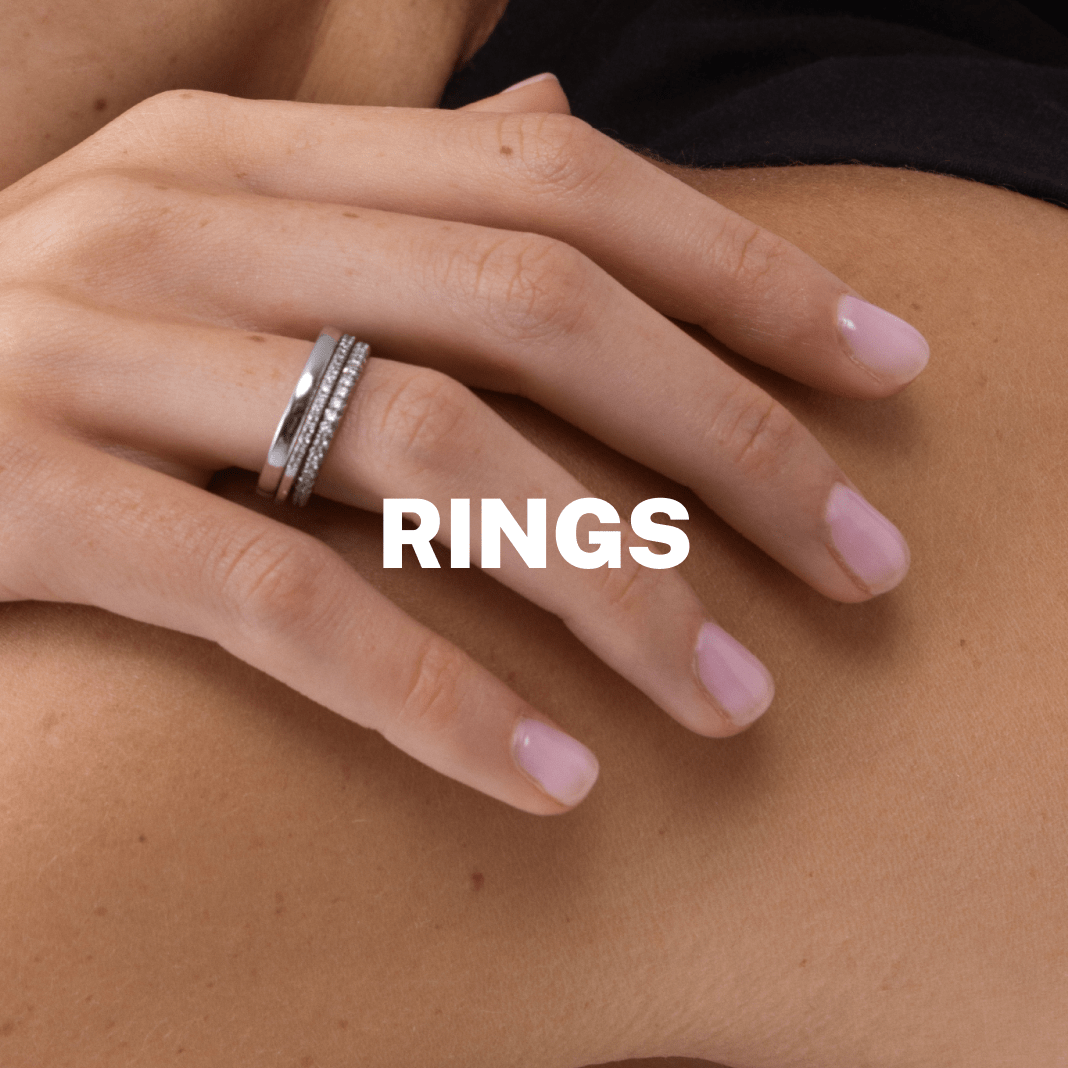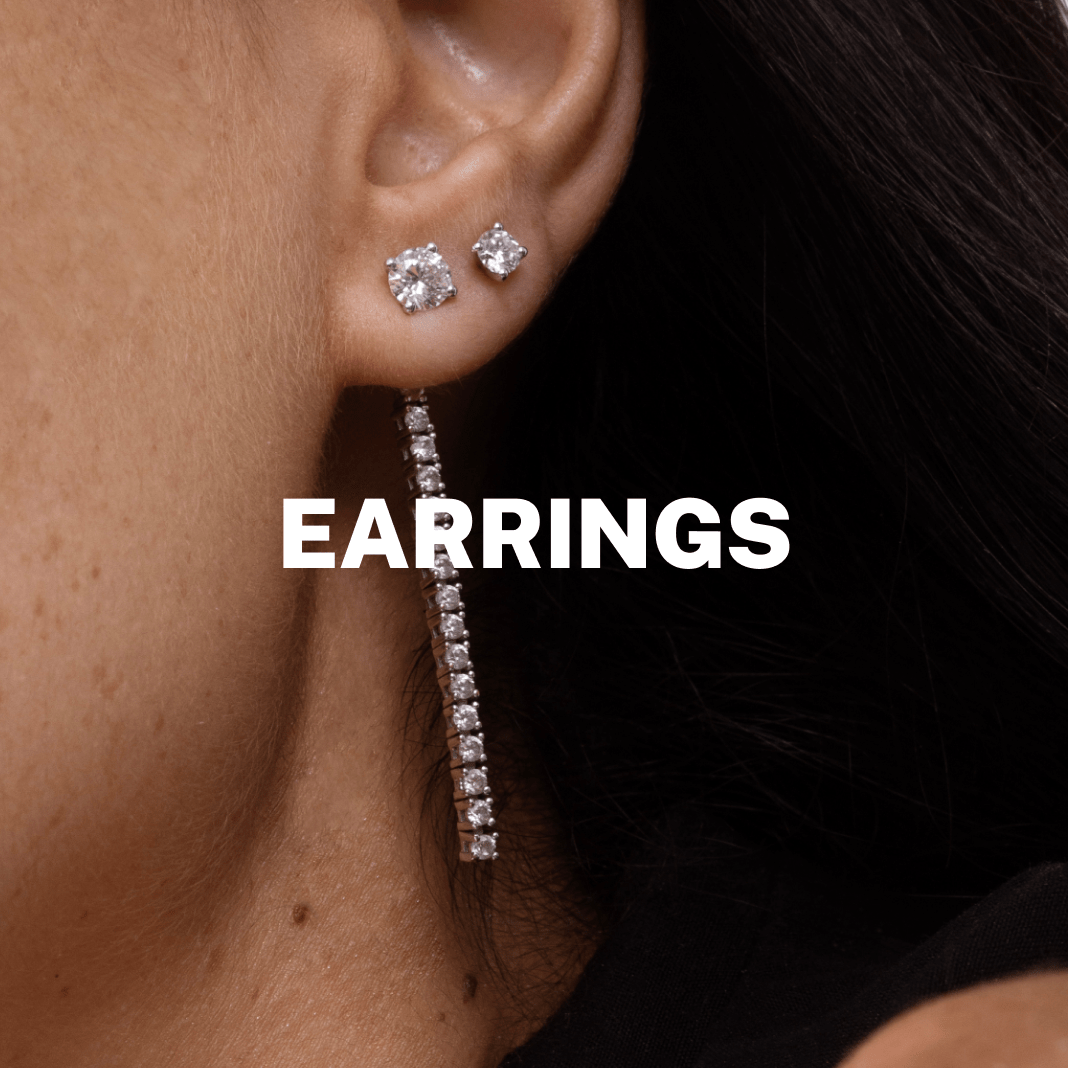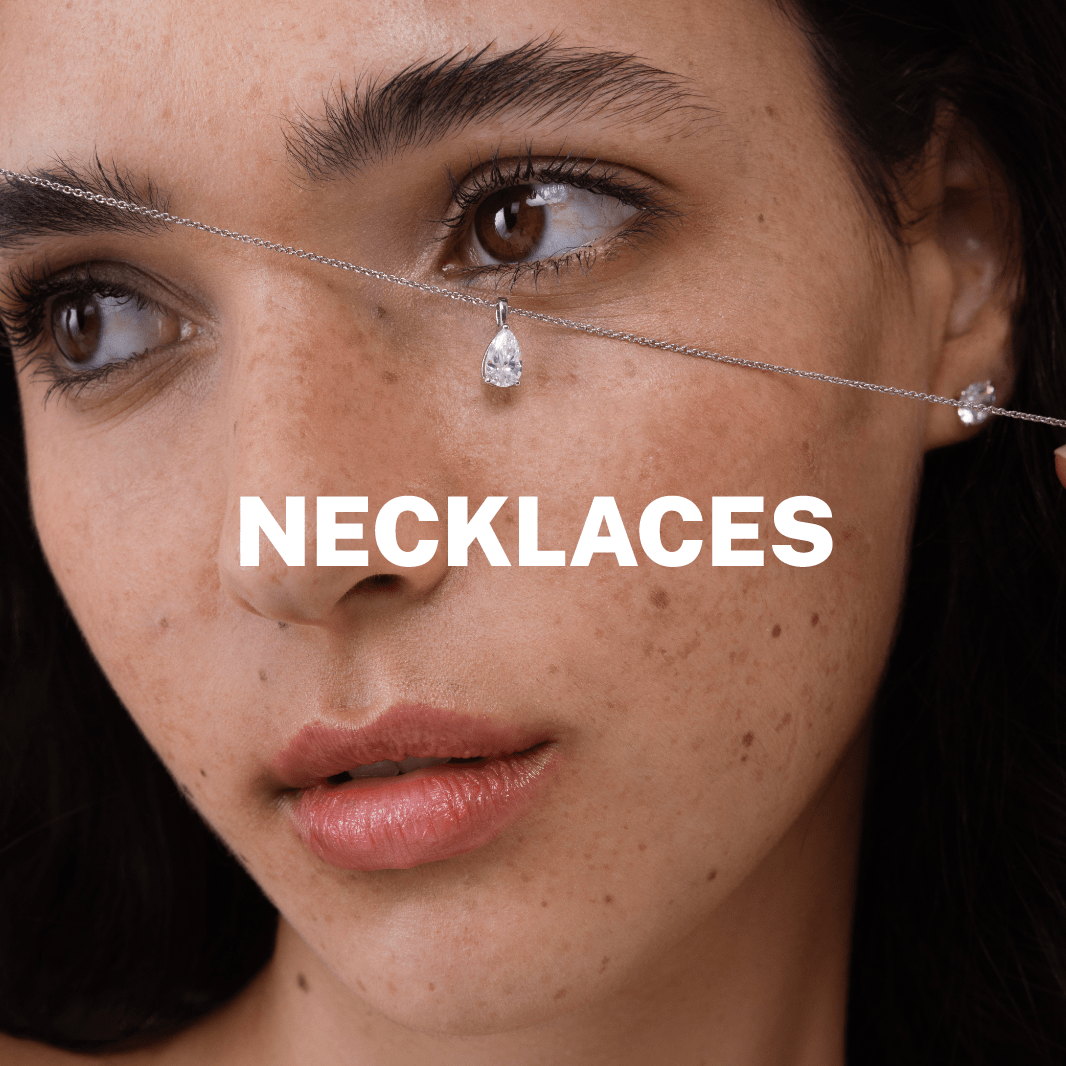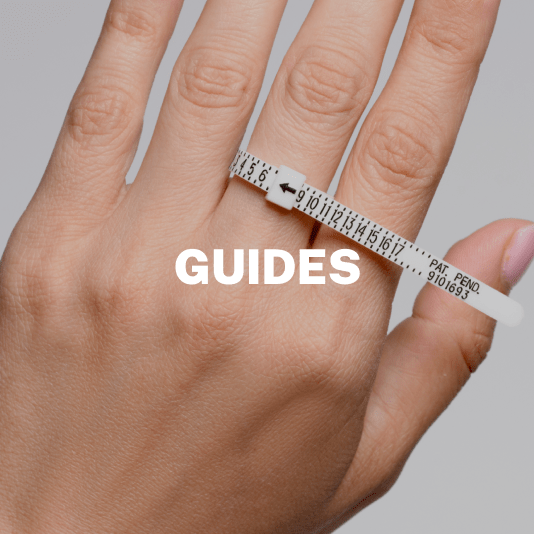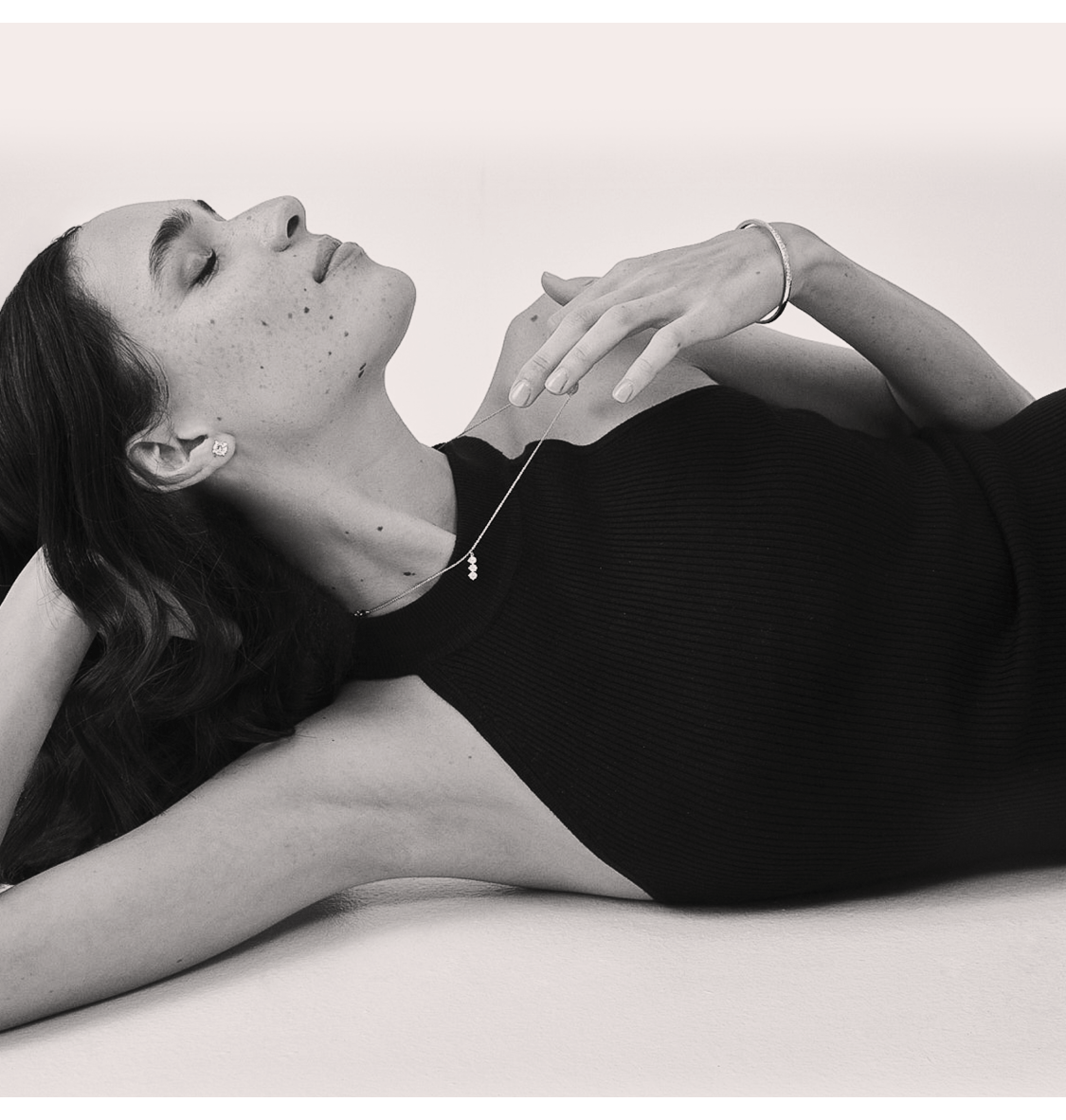


How to Get Ring Size: Guide to the Perfect Fit
Sun, Nov 09, 2025
Finding the right ring size is the most important part of purchasing a new piece of jewelry, whether you're shopping for a glamorous diamond ring or finally bringing your grand proposal scheme to life. The ring that is too loose will be lost, that which is too tight you cannot wear. The path toward achieving the perfect fit begins with properly answering the most important question: how to get ring size accurately and correctly.
This all-inclusive guide dissects the best ways to measure your finger at home, how you can get an accurate size from an existing ring and all of the need-to-knows—from knuckle size to weather patterns—that can affect a measurement. With these steps down, you can confidently slide your new ring on and know it fits like a glove – and will be comfortable to wear for the rest of your life.
The DIY Approach: How to Get Your Ring Size at Home
While a professional jeweler's measurement will always be the most accurate, simple household tools allow you to determine how to get your ring size at home with impressive precision. These methods require careful execution and consistent re-measurement to minimize error.
Method 1: The Paper Strip or Tape Circumference Method (The Most Common DIY)

This method is a measure of the girth (distance around) of your finger, which in turn converts to standard size tables.
-
Materials Required: You will need a narrow piece of paper (about $1/2\text{ inch}$), a fine-tip pen or marker, and a ruler or tape measure graduated in millimeters ($\text{mm}$). Avoid using string or floss, which can be stretched easily and cause large inaccuracies.
-
Wrap Tightly: Wrap the strip of paper snugly around the finger you’re going to wear your ring on. Be sure the fit is secure — tight enough not to slip but comfortable enough for daily wear.
-
Identify the Overlap: Mark the overlap with your pen directly where one side of paper strip covers the other.
-
Measure and Record: Lie the strip down flat and measure in millimeters ($\text{mm}$) from the end to the mark. That is your finger’s girth.
-
Verify the Knuckle: Before you finish, slide the paper loop over your finger. If the base of your finger is much thinner than the knuckle, you may need to measure both and use an average size. You need to make sure that the size you pick can slide past through the largest part with ease.
-
Convert: Use an international ring size chart (provided later in this guide) to match your millimeter circumference to the corresponding US or UK ring size.
Method 2: The Existing Ring Diameter Method (Using a Chart)

If you already have a ring the fits well on the intended finger, measure its inside diameter.
-
Measure with a Ruler or Caliper: If you are not sure the size, use a ruler to measure the inner diameter of your old ring, same from the inside edge to inside edge. The most accurate tool for this is a digital caliper, which measures in precise tenths of a millimeter.
-
Center Measurement is Important: Measure across the center of the ring's opening to get its largest diameter.
-
Cross-reference: Convert this diameter measurement (in $\text{mm}$) to a similar ring size on standard size chart. This method is frequently more accurate than the circumference method provided you have a good fit with a reference ring.
Method 3: The Printable Ring Sizer Tool (Requires Calibration)

Several jewelers provide printable ring sizers as a free download. These fall into two types:
-
The Belt Sizer: A template that you cut out, loop through and adjust on your finger as if it were a belt.
-
The Circle Chart: A page filled with different printed circles. Here’s how it works: You lay a properly fitted ring over the circles till your ring’s inside diameter lines up with one of the printed circles.
🛑 CRUCIAL WARNING: IT IS ABSOLUTELY ESSENTIAL THAT THE PDF BE PRINTED AT $100\%$ SCALE, AND THAT ALL AUTO-SCALING FEATURES (E.G., ''FIT TO PAGE'') BE TURNED OFF. Print a test scale (the usual one is $1\text{ inch}$ or $50\text{ mm}$) onto the paper and check the measurement with a real ruler before using sizes. Printing errors are the culprits in most cases of incorrect DIY sizing.
The Stealth Approach: How to Get Ring Size from a Ring for a Surprise
If you’re planning a surprise proposal, here’s what you need to know in order figure out how to get ring size at home from a ring they already wear. One is to get a really accurate size, without making it obvious that she’s getting one.
Tactic 1: The internal Tracing and Caliper measures

-
Borrow Discreetly: Borrow the same ring from their finger (usually the left hand ring finger for engagement rings). This usually means taking it from him while he's asleep, taking a shower or out of the house for some time.
-
Trace the Inside: Put the ring down on a piece of paper and trace lightly around the inside. Repeat this 3 to 4 times for evenness.
-
Measure the Tracing: Take a tracing of the thread, 80 mm or so in diameter at its centre.
-
Take the Tracing: If you are not confident with converting for finding a ring size, take your paper tracing to an expert jeweler instead. They have their standard sizer models, which they can use to match your trace to an exact size.
Tactic 2: The Quick "Try-On" Method

If you’re pressed for time to look at the ring:
-
Slide on to Your Finger: Slowly put the borrowed ring on one of your fingers same as in the video and push it all the way down to your finger until you cannot go anymore. It may not go all the way down.
-
Mark the Spot: Take a pen or marker and create a faint line right on your finger where the borrowed ring's bottom is sitting.
-
Go to the Jeweler: Stop by a jeweler, and have them measure what size finger your mark says you are. It works very well, as it gauges your finger's "thickness" right at the precise spot where the ring would sit.
Tactic 3: Enlist an Accomplice
This can be the safest and best kept secret approach. Get a close friend, brother or parent of the gifted to ask the size subtly. They can be in-store while pretending to shop for themselves or be trying on rings during a casual shopping trip. Many jewelers are used to assisting customers in this “sanctioned espionage.”
The Science of Fit: Factors Influencing Ring Size Accuracy
An exact measurement is only the beginning. There are a few variables concerning the fit of a ring, and if you don’t consider these when shopping can mean having to pay expensive alteration charges later.
1. Temperature and Time of Day
Fingers can swell and shrink during the day as well as in response to weather.
-
Best Time to Measure: The best time to measure the fingers is, at the end of the day and when your fingers are warm (Fingers are smaller in the early morning and when cold).
-
Consistency Test: Take 3-4 readings at different times of the day to verify the consistency. If you constantly get two varying sizes, opt for the larger one as it is easy to size a ring down and less expensive with regard to cost compared to sizing up.
2. Band Width
The band thickness of the ring is one of the biggest determinants in how a ring feels on your finger.
-
Wider Bands: Rings with wider bands (e.g. $4\text{ mm}$ and over), the kind you find in intricate or diamond heavy wedding bands, will feel considerably tighter as there is more metal touching your skin. If you're buying a wider band, size up by about a quarter to half size from your narrow-band measurement.
-
Narrow Bands: You may feel a little bit looser in the ring if you have a very thin band like with delicate solitaire.
3. Knuckles vs. Base
A ring that fits should be able to slip over your knuckle easily and sit nicely at the base of your finger without being too loose.
-
Thick Knuckles: If the knuckle is much larger than the base of your finger, then you will need to size the ring for your knuckle. The ring may fit looser at the base when it’s put on, but you’ll be happy for that when it comes time to take it off. You can always have a sizing bead or speed bump put inside the band later to help keep the ring from spinning at the base.
-
Tapered Finger: If your finger is tapered to be wider at the bottom than the top, it’s important that it fits over this part, and yet not fall off. Treat yourself, you are worth it!
The Universal Sizing Puzzle: International Conversion Chart
Our sizes are US standard sizes, not international sizes. The US and Canada deal with numeric sizes (e.g., Size 7), while UK and Australia use an alphabetical system (e.g., Size N), and many European countries are familiar with the ISO standard based on inside circumference in millimeters ($\text{mm}$).
Here if you want to convert your $\text{mm}$ circumference or diameter to the right international size. Ask the actual jeweler's chart for exact sizes as slight variances do occur.
| Inner Circumference (mm) | Inner Diameter (mm) | US/Canada Size | UK/Australia Size | EU/ISO Size |
| 49.3 mm | 15.70 mm | 5 | J 1/2 | 49 |
| 51.9 mm | 16.50 mm | 6 | L 1/2 | 52 |
| 54.4 mm | 17.30 mm | 7 | N | 54 |
| 57.0 mm | 18.10 mm | 8 | P 1/2 | 57 |
| 59.5 mm | 18.90 mm | 9 | R | 60 |
| 62.1 mm | 19.80 mm | 10 | T 1/2 | 62 |
The Final Check: Expert Tips for a Perfect Fit
Just before you make a final purchase, follow these last expert tips to get things right:
-
Professional Sizing is Ideal: We highly recommend you get your sized by 2-3 professional jewelers following our sizing instructions, with their metal ring sizers. This is the benchmark for truth.
-
The Quarter Size Rule: If your finger is a half size larger in summer/winter or after working out, the jeweler can adjust the ring to be sized as though it were a quarter size (e.g., $7.25$ instead of $7.5$) for optimal all-weather fit and comfort.
-
Order Up, Not Down (Mostly): If you are an even number close to the two sizes, typically order the larger of the two. It's almost always easier, cheaper, and better for the setting (especially pavé diamonds) to size a ring down then up.
-
Verify the Policy on Resizing: Be sure to verify these resizing policies for the exact ring style you are purchasing. Rings with intricate designs, full eternity bands (ones where diamonds go all the way around in a ring) or tension settings very often can’t be sized — at all.
-
Hand Dominance: Your dominant hand is typically a half to full size larger than the other hand. Remember to measure the exact finger on which you plan to wear the ring.
By adhering to these steps for how to get a ring size while keeping in mind every factor from temperature, to band width, you can have confidence that your new ring will arrive and fit its first time. The perfect fit is the ultimate touch of luxury that brings joy and ease to your jewelry for a lifetime.
